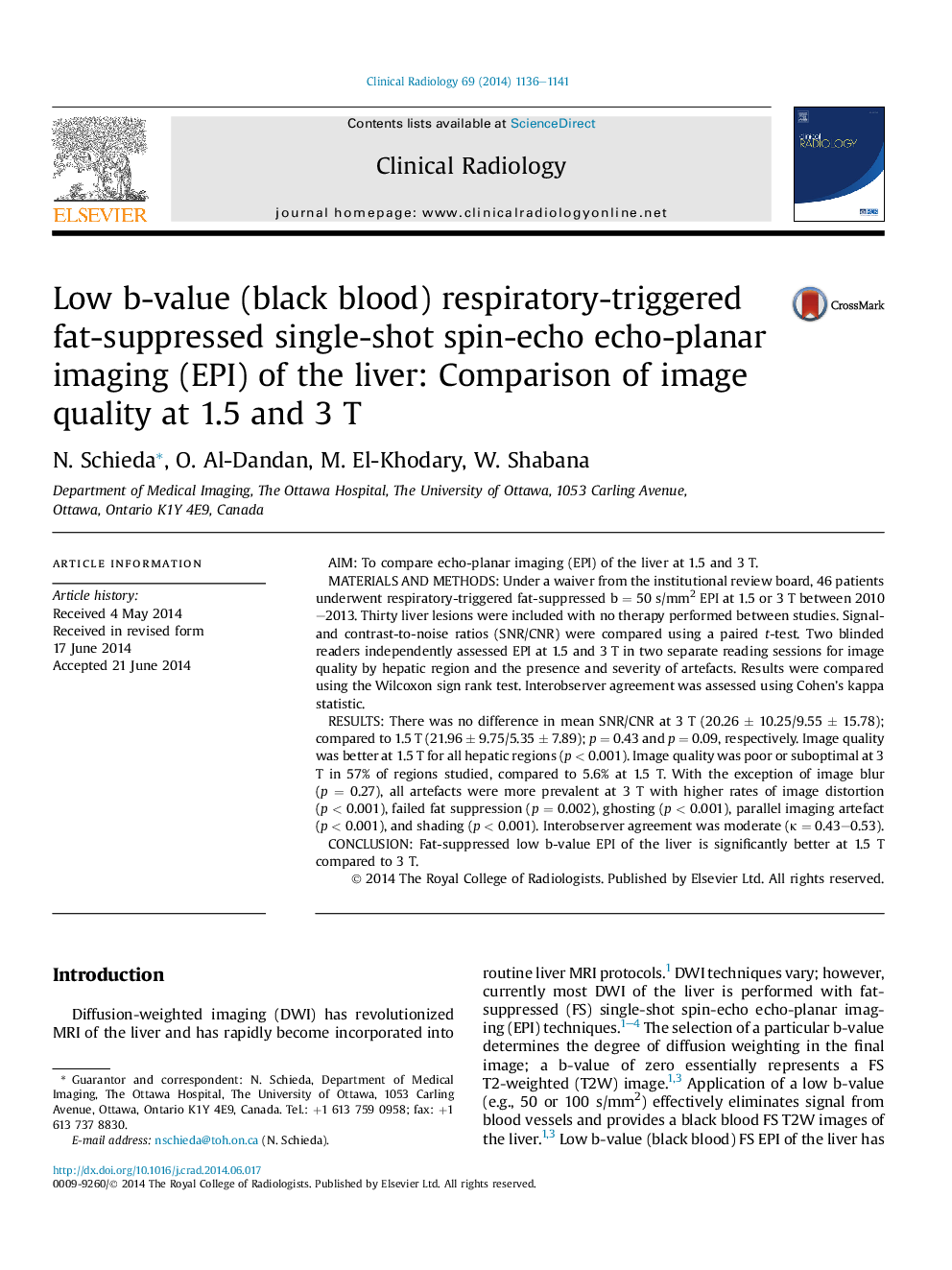| Article ID | Journal | Published Year | Pages | File Type |
|---|---|---|---|---|
| 3981559 | Clinical Radiology | 2014 | 6 Pages |
•Image quality of echo-planar MRI of the liver is worse at 3T when compared to 1.5T.•Echo-planar MR artifacts are more common and more severe at 3T compared to 1.5T.•Echo-planar liver MRI has similar signal/contrast to noise ratios at 1.5T and 3T.•Echo-planar MRI of the liver should not replace T2 weighted fast spin echo at 3T.
AimTo compare echo-planar imaging (EPI) of the liver at 1.5 and 3 T.Materials and methodsUnder a waiver from the institutional review board, 46 patients underwent respiratory-triggered fat-suppressed b = 50 s/mm2 EPI at 1.5 or 3 T between 2010–2013. Thirty liver lesions were included with no therapy performed between studies. Signal- and contrast-to-noise ratios (SNR/CNR) were compared using a paired t-test. Two blinded readers independently assessed EPI at 1.5 and 3 T in two separate reading sessions for image quality by hepatic region and the presence and severity of artefacts. Results were compared using the Wilcoxon sign rank test. Interobserver agreement was assessed using Cohen's kappa statistic.ResultsThere was no difference in mean SNR/CNR at 3 T (20.26 ± 10.25/9.55 ± 15.78); compared to 1.5 T (21.96 ± 9.75/5.35 ± 7.89); p = 0.43 and p = 0.09, respectively. Image quality was better at 1.5 T for all hepatic regions (p < 0.001). Image quality was poor or suboptimal at 3 T in 57% of regions studied, compared to 5.6% at 1.5 T. With the exception of image blur (p = 0.27), all artefacts were more prevalent at 3 T with higher rates of image distortion (p < 0.001), failed fat suppression (p = 0.002), ghosting (p < 0.001), parallel imaging artefact (p < 0.001), and shading (p < 0.001). Interobserver agreement was moderate (κ = 0.43–0.53).ConclusionFat-suppressed low b-value EPI of the liver is significantly better at 1.5 T compared to 3 T.
